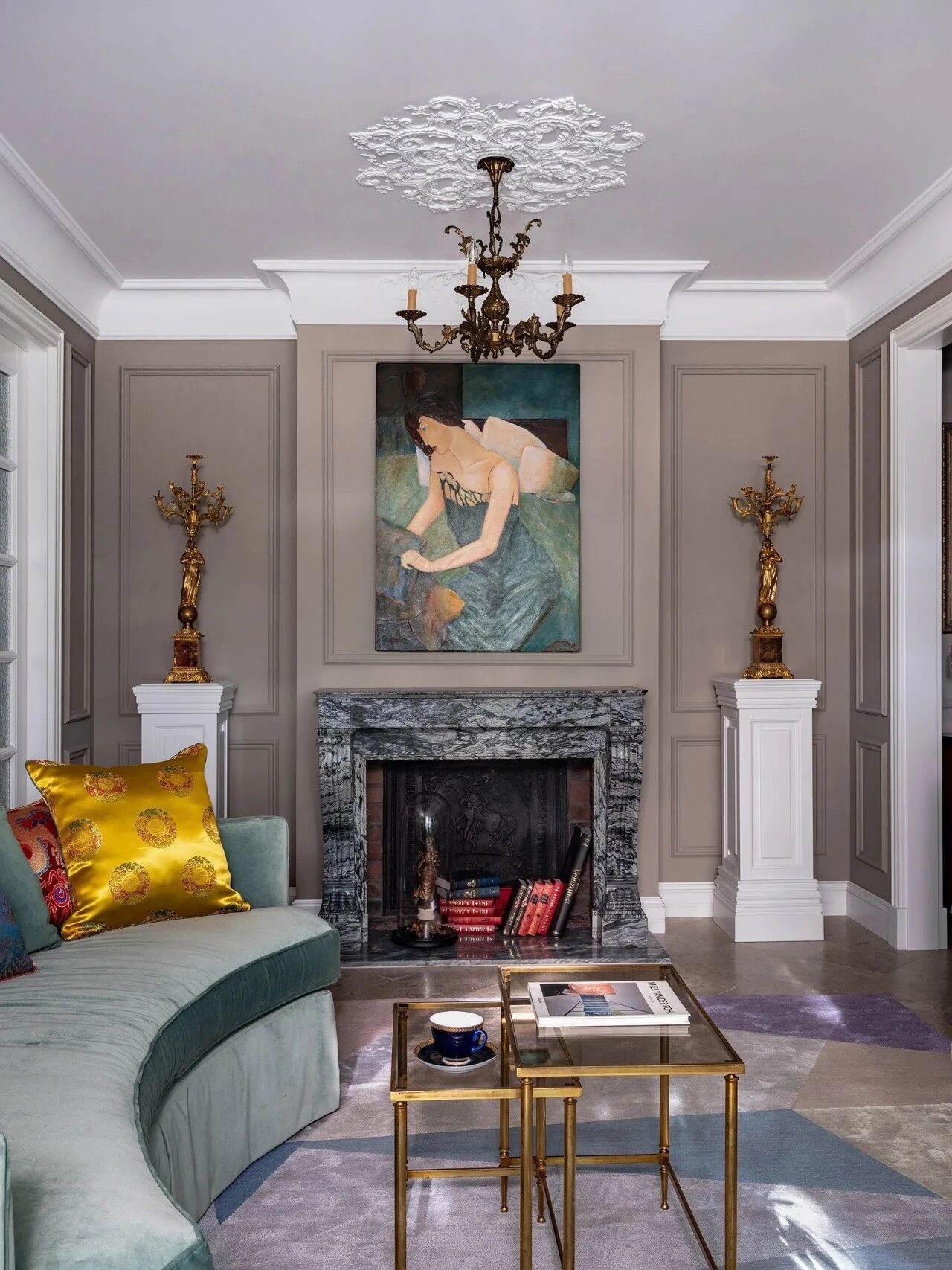Oliver Beer talks animism, archives and material culture ahead of his Met Breuer show
2019-03-15 13:12
Installation view of Oliver Beer’s recent ‘Household Gods’ exhibition at Galerie Thaddaeus Ropac, Paris. Courtesy of Galerie Thaddaeus Ropac
‘This is a Ptolemaic pot, and it’s got a little face on the front. It’s the household god Bes – a jolly corpulent figure who you’d have in a shrine at home,’ explains artist Oliver Beer. The 2,000-year-old object he points to could well belong to the Louvre, though on this day we are touring Beer’s solo exhibition at Galerie Thaddaeus Ropac in Paris – comprising work from 2018 to the present day.
这是托勒密锅,它的正面有一张小脸。艺术家奥利弗·比尔(OliverBeer)解释说,这是家庭神贝斯(Bes)-一个快乐而肥胖的人物,你会在家里的圣殿里看到他。他所指的这件有两千年历史的物件很可能属于卢浮宫,不过在这一天,我们将在巴黎的加莱丽·塔德乌斯·罗帕克参观比尔的个展-其中包括2018年到今天的作品。
Titled ‘Household Gods’, the show consists of four installations, each comprising between four to 16 objects. They range from a German artillery shell from the First World War, to a Ming dynasty horseman sculpture, to a Japanese Arita porcelain urinal (exported to Amsterdam in the 18th century, where it was decorated in the style of the day). For each installation, Beer mined the personal collection of a family member for items of significance, which he has displayed on minimal white plinths that lend an aura of grandeur.
名为“家庭神”的展览由四个装置组成,每个装置包括四到十六件物品。从第一次世界大战起的德国炮弹,到明代的骑手雕塑,再到日本的Arita陶瓷小便池(18世纪出口到阿姆斯特丹,当时的装饰风格)。对于每一个装置,比尔挖掘了一个家庭成员的个人收藏,寻找有意义的物品,他把这些物品展示在极小的白点上,给人一种壮丽的光环。
‘Each object has a story of survival. Taste, chance, politics, and balance of power all determine why certain objects come out of certain places at certain times,’ he remarks, marvelling at the fact that each piece would have passed through many hands in many lands, before they wound up respectively with his grandmother, father, mother and sister in Kent, England. The installations present an affectionate, while whimsical portrait of Beer’s family, while suggesting the ways in which contemporary Western culture has assimilated varying civilisations and epochs.
每一个物体都有生存的故事。他说:“品味、机会、政治和权力平衡都决定了为什么某些物品会在特定时间从某些地方出来。”他对每一件物品在英国肯特的祖母、父亲、母亲和妹妹分别与祖母、父亲、母亲和妹妹分别结束之前,都会在许多国家通过许多手感到惊讶。这些装置展现了对比尔家族的深情和异想天开的描绘,同时也暗示了当代西方文化吸收不同文明和时代的方式。
Household Gods (Grandmother), 2019, 16 vessels, 2 speakers, 18 plinths, by Oliver Beer. Courtesy of Galerie Thaddaeus Ropac
家神(祖母),2019年,16艘船只,2位扬声器,18个底座,由OliverBeer。GallerieThaddaeusROPAC的礼遇
It’s the microphones pointing into each object that animates the installations. They play with resonant frequency, an idea that Beer has explored for many years. ‘The form and the geometry of each object in the world that’s hollow creates a [musical] note,’ he says. He’d sung into the interior of each object in the show, going through the chromatic scale to discover the specific note at which sound would reverberate.
是麦克风指向每一个物体的动画安装。他们玩共振频率,这是啤酒多年来一直探索的理念。他说,世界上每一个空心物体的形状和几何形状都创造了一个[音乐]音符。他唱到了表演中每一个物体的内部,通过音阶来发现声音回响的特定音符。
Now, a tiny speaker within each object emits its innate note, which rumbles within its interior and makes it appear to sing into the microphones. Together they form a gentle chorus, at once primeval and cerebral, that speaks to the human impulse to breathe life into inanimate objects. ‘We have a retinal approach to the world,’ Beer continues. He wants people to instead ‘try and think about objects, not as we see them but as we hear them.’
现在,每个物体内的一个微小的扬声器发出它固有的音调,在内部发出隆隆的声音,使它看起来像在麦克风中唱歌。他们一起组成了一个温柔的合唱团,同时也是原始的和大脑的,这说明了人类对无生命物体呼吸生命的冲动。比尔继续说:“我们对世界有一种视网膜式的接触。”他希望人们“试着去思考事物,而不是当我们看到它们时,而是当我们听到它们的时候。”
This summer, Beer will be taking his work to a new level with a show at the Met Breuer in New York, featuring a single, monumental installation occupying the entire top floor. In preparation for the show, he’s been spending time in the Met’s extensive archives. ‘The Met is an encyclopaedic museum, so its archives are by definition a portrait of humanity,’ he says.
今年夏天,啤酒将把他的工作带到一个新的水平,在纽约MetBreuer举行的一次会议上展示了一个巨大的安装,占据了整个顶层。他说,在准备节目时,他在大都会博物馆里花了时间。“大都会博物馆是一个百科全书博物馆,所以它的档案是人类的肖像,”他说。
But it’s also a portrait of the people who created the museum and continue to expand its holdings. ‘I’m interested in why that hectare of New York should be the home of such an extraordinary, but also idiosyncratic collection. There are reasons why certain objects come in certain waves, and they’re completely tied to balances of power.’
但这也是一个人的肖像,谁创造了博物馆,并继续扩大其收藏。“我很感兴趣的是,为什么纽约的这片土地应该是如此非凡而又独特的收藏之地呢?”有一些原因可以解释为什么某些物体会以特定的波浪出现,它们完全与力量的平衡联系在一起。“
‘The Met is an encyclopaedic museum, so its archives are by definition a portrait of humanity.’
“大都会博物馆是一座百科全书博物馆,因此它的档案在定义上是一幅人性的写照。”
The new installation will involve 32 objects, each corresponding to a different note on the chromatic scale, so collectively they become an instrument. All of them will connect to a keyboard. ‘When you press down middle C on the keyboard, the Mesopotamian Cow that sings a middle C will sing the C.’ Sound, then becomes the lingua franca of items of diverse origin. Beer is inviting composers to come and make music with the installation, with a concert planned for every week.
新的装置将涉及32个物体,每个物体对应一个不同的音符,因此它们共同成为一种乐器。它们都会连接到键盘上。当你在键盘上按下中间C键时,唱中C的美索不达米亚牛就会唱C。声音,然后成为各种来源的项目的通用语言。啤酒是邀请作曲家来做音乐装置,计划每周举行一次音乐会。
In uncovering the aural abilities of the Met’s artefacts, he will encourage viewers to rediscover the pieces; not only to see them, but hear them anew. Quite literally in fact, as resonant frequencies (unlike appearances) stay constant from the moment an object is created, undimmed by the passage of time. §
在揭示大都会博物馆艺术品的听觉能力时,他将鼓励观众重新发现这些作品,不仅要看到它们,还要重新聆听它们。事实上,当共振频率(不像外表)从物体被创造的那一刻起就保持不变,不受时间的推移而变暗。§
奥利弗·比尔在巴黎的加莱丽·塔德杜乌斯·罗帕克的“家庭之神”的安装视图。摄影:查尔斯·杜普拉特。感谢加莱丽·塔德修斯·罗帕克在巴黎的加莱丽·塔德戴乌斯·罗帕克,奥利弗·比尔的“家庭之神”的安装视图。摄影:查尔斯·杜普拉特。由Galerie Thaddaeus Ropac提供
重组(无法洛法利娜母亲),细节,2018年,由奥利弗·比尔(OliverBeer)著。摄影:查尔斯·杜普拉特。由GalerieThaddausRopac重组(无法洛瓦邦的萨布丽娜母亲)提供,细节,2018年,奥利弗·比尔(OliverBeer)著。摄影:查尔斯·杜普拉特。由Galerie Thaddaeus Ropac提供
“家庭神(父)”,2019年,8艘船,2名发言人,10人,奥利弗·比尔(OliverBeer)著。摄影:查尔斯·杜普拉特。由GalerieThaddausRopac家庭神(父亲)提供,2019年,8艘船,2名演讲者,10名船员,奥利弗·比尔(OliverBeer)。摄影:查尔斯·杜普拉特。由Galerie Thaddaeus Ropac提供
 举报
举报
别默默的看了,快登录帮我评论一下吧!:)
注册
登录
更多评论
相关文章
-

描边风设计中,最容易犯的8种问题分析
2018年走过了四分之一,LOGO设计趋势也清晰了LOGO设计
-

描边风设计中,最容易犯的8种问题分析
2018年走过了四分之一,LOGO设计趋势也清晰了LOGO设计
-

描边风设计中,最容易犯的8种问题分析
2018年走过了四分之一,LOGO设计趋势也清晰了LOGO设计
































